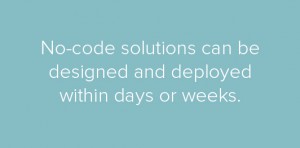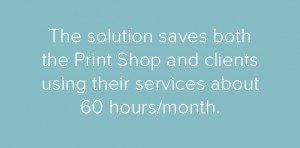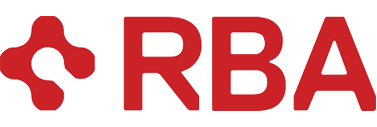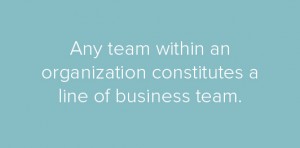Oftentimes, buried deep within an organization and without a significant source of funding, are countless line of business teams that are responsible for processes and content that are critical in their own right. (Any team within an organization constitutes a line of business team. Typically these teams have very specific names that relate to the organization’s core business or core business processes.) Most teams do the best they can with what they know and have. They scrape together solutions that overuse Excel, rely on sending emails back and forth to provide notifications, and require a handful of manual updates or steps to complete their business processes.
Over the last six years consulting for small, medium and large (global) businesses, both privately held businesses and publicly traded organizations, the most prevalent challenge I’ve seen is line of business teams left to themselves to create, manage and maintain business processes and solutions. I’m not saying this is an organization’s most significant challenge, rather the most prevalent. And I think that in some measurable form, the pervasiveness of this challenge adds up, such that addressing it is likely worth the investment.
Say Hello to No Code Solutions
Often, the teams mentioned above will have some amount of funding that could be used to build technical solutions to streamline processes or add value through reporting visualization, etc. But, these teams typically do not have large enough budgets needed for custom code-based applications or high end commercial software. Meeting some (and at times, meeting all) of a team’s core needs can be compelling enough to take action. This is where no code solutions (NCS’s) come in. NCS’s typically rely on existing platforms in use by the organization and or/free applications and add-ons (Power BI Desktop, SharePoint Designer, InfoPath, Light-weight client side code, etc.). They are very compelling in that they are extremely cost effective compared to custom-built code-based solutions or high-end commercial software and NCS’s can typically be designed and implemented within days or weeks.
 Even with all of the benefits, NCS’s also have their limitations. Some business teams need more than NCS’s can offer. These teams end up making their case for needed funds, obtain them and procure proper custom development help or commercial software. It’s also important to understand up front that NCS’s are oftentimes limited. This will help you pursue the viability of NCS’s in a frame of mind consistent with reality. You may solve many of your team’s core needs, but the chance of getting everything on your wish list is likely not going to happen.
Even with all of the benefits, NCS’s also have their limitations. Some business teams need more than NCS’s can offer. These teams end up making their case for needed funds, obtain them and procure proper custom development help or commercial software. It’s also important to understand up front that NCS’s are oftentimes limited. This will help you pursue the viability of NCS’s in a frame of mind consistent with reality. You may solve many of your team’s core needs, but the chance of getting everything on your wish list is likely not going to happen.
In summary, no code solutions (NCS’s) deliver limited functionality that streamline processes and solve important challenges for line of business teams at a much reduced cost as compared to custom development or commercial software.
Below are a few examples of no code solutions and the value they can bring. The examples below are real-world but client names have been changed so as not to disclose company information.
Example 1
Acme Company runs a print shop at their corporate office to support all of their subsidiary companies. Clients (subsidiary company employees) email the Print Shop with requests or fill out a paper form, scan it and then email the form to the Print Shop. Receiving 10-20 requests per week, some orders are as simple as business cards for a new employee, other requests are complex, and require dialogue between the requestor and the Print Shop via email. With just one complex order potentially generating a string of up to 20 emails, the Print Shop is perpetually overwhelmed. If that weren’t bad enough, to answer client inquiries, the Print Shop must sort through hundreds of emails to find the right email thread to see where things were left between the Print Shop and the client on a particular request. Sounds a bit painful, eh?
Solution:
Using the power of SharePoint 2013, SharePoint Designer 2013 and InfoPath, a custom form was built with the company’s colors and logo. The solution allowed for the Print Shop and the client to record a history of all comments, which were date stamped, between the requestor and the print shop with the most recent comment at the top of the field. The comments took the place of emailing back and forth with updates or changes. The solution also allowed the Print Shop to record notes in an InfoPath view (Production Notes view) that only the print shop personnel could see. The solution also kept track of the service time in days each request took (stored in the Production Notes view) and sent notifications to all relevant parties at certain times throughout the process informing them of the status of the request (Request received, Print Shop left a Comment, Requestor left a Comment, Order has been Processed). Lastly, the solution allowed a client to open a completed order and click a button to “Reorder” the previous order. If the original order took 10-20 clicks, reordering becomes a huge time saver.
 ROI:
ROI:
The solution cost about 25K. In talking to the client recently (February 2016), the client shared with me that it is believed the solution saves both the Print Shop and clients using their services about 60 hours per month. If a skilled employee costs a company $35/hour and we use this dollar amount for all hours saved…that is a $2100 (60 hours X $35 hour) of savings per month. This means that right around the 1 year mark, this company begins seeing a return on their investment. My experience is that most NCS’s have a life span of 2-5 years. This is a great example of where NCS’s provide significant value and produce a measureable ROI.
Example 2
Using SharePoint 2013 and the new (new with SharePoint 2013) and very powerful Content Search web parts along with custom display templates, my colleagues and I were able to deliver a very cool and affordable intranet site. Site pages, page sections, navigations (global and local) were all classified using a new Information Architecture (IA) that was designed based on 6 weeks of requirements gathering and IA discussions. The IA is the backbone of the site, providing an organized and intuitive structure whereby site users can find the information they are looking for with only a few clicks in most instances.
The solution is easy to maintain; advanced skill is not required, so the site can be modified and kept up to date by the site’s Power Users (very important to this company). Lastly the site’s UI was elevated with some light-weight JavaScript/jQuery using Content Search web parts and custom display templates. The solution finished up at about 81K – a huge win for this company.
There are numerous instances where line of business teams need to streamline processes, review or analyze data through reporting visualizations, build solutions that require notification as a process goes from one stage to the next, improve the organization of and access to large data sets, and improve many other types of processes or data sets. 
At times funding is an issue for these teams. This does not have to preclude teams from searching for solutions that provide significant value that fit within their budget. Using no code solutions, oftentimes teams discover that they can do just that – build solutions that deliver significant value and fit within their budget.



